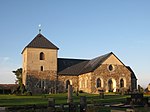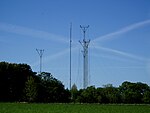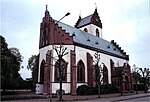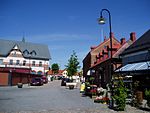Scania, also known by its native name of Skåne (Swedish: [ˈskôːnɛ] (listen), Danish: [ˈskɔːnə]), is the southernmost of the historical provinces (landskap) of Sweden. Located in the south tip of the geographical region of Götaland, the province is roughly conterminous with Skåne County, created in 1997. Like the other former provinces of Sweden, Scania still features in colloquial speech and in cultural references, and can therefore not be regarded as an archaic concept. Within Scania there are 33 municipalities that are autonomous within the Skåne Regional Council. Scania's largest city, Malmö, is the third-largest city in Sweden, as well as the fifth-largest in Scandinavia.
To the north, Scania borders the former provinces of Halland and Småland, to the northeast Blekinge, to the east and south the Baltic Sea, and to the west Öresund. Since 2000, a road and railway bridge, the Öresund Bridge, bridges the Sound and connects Scania with Denmark. Scania forms part of the transnational Øresund Region.From north to south Scania is around 130 km; it covers less than 3% of Sweden's total area. The population of over 1,320,000 represents 13% of the country's population. With 121 inhabitants per square kilometre (310/sq mi) Scania is the second-most densely populated province of Sweden.
Historically, Scania formed part of the kingdom of Denmark until the signing of the Treaty of Roskilde in 1658. Denmark regained control of the province (1676–1679) during the Scanian War and again briefly in 1711 during the Great Northern War. Scania has been an undisputed part of Sweden since 1720.









